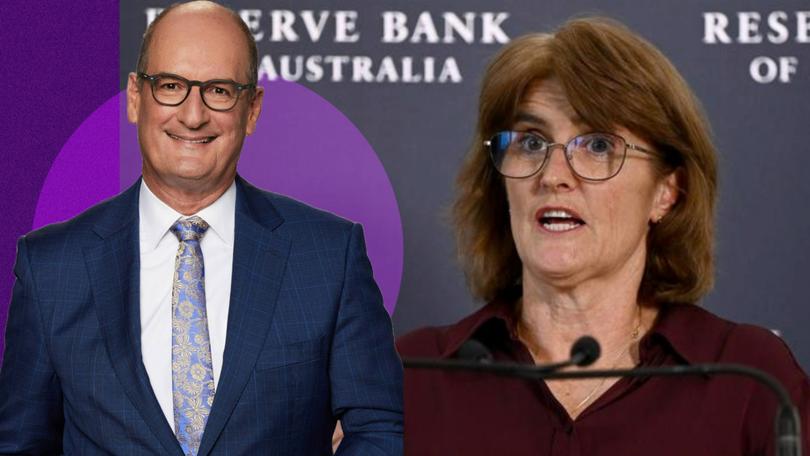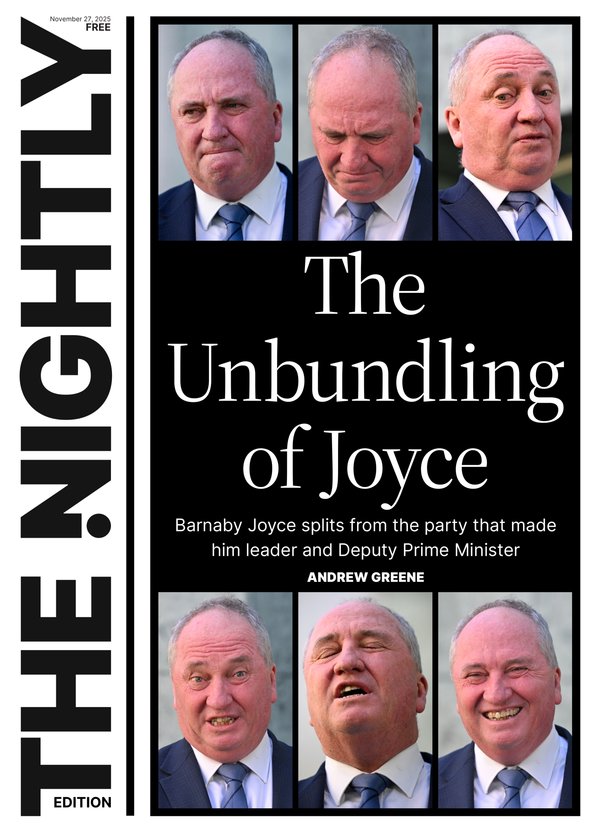DAVID KOCH: Why RBA Governor is like Seinfeld’s soup nazi when to comes to reining in inflation

Reserve Bank governor Michele Bullock had a lot to say to the Senate Economics Committee on Wednesday. As the nation’s financial therapist, her appearance was an important soapbox to get into the psyche of all Australians.
Economies and economic data are a reflection of our behaviour and she wants to influence that behaviour. Right now she’s using the old carrot-and-stick strategy.
You all be good boys and girls, keep those financial belts tight, stay in the bunker so inflation keeps coming down.
Sign up to The Nightly's newsletters.
Get the first look at the digital newspaper, curated daily stories and breaking headlines delivered to your inbox.
By continuing you agree to our Terms and Privacy Policy.If we don’t toe the line then the stick comes out: “But if it turns out, for example, that inflation starts to go up again or it’s much stickier than we think (and) we’re not getting it down, then we won’t hesitate to move and raise interest rates again.”
It doesn’t get much clearer than that. Think the infamous soup nazi in the Seinfield TV series: no rate cuts for you!
Because that is what Ms Bullock is saying. No rate cuts for us for quite a while. Forget any cuts before the end of the year. There is now every likelihood of rate INCREASES.
Financial markets have been thrown into a spin and are now expecting another 0.25 per cent rate rise, with a 50-50 probability of it happening in December, which would take the cash rate from 4.35 to 4.6 per cent.
Any rate cuts are now not expected until at least around this time next year or even later in 2025.
Some of the gloomier economists are expecting two or three rate rises before the end of this year. That would be devastating for so many Australian families.
We’ve endured the shortest, sharpest interest rate cycle of hikes in over 50 years and Wednesday’s national accounts show just how devastating that cycle has been.
Interest paid on housing debt is up by 30.8 per cent over the past year because of so many borrowers coming off their low fixed-rate loans.
Since the pandemic, interest paid on housing debt is up by a massive 172 per cent.
Not only are family budgets getting squeezed by this 172 per cent rise in home loan repayments, but the housing shortage continues to push home prices higher. As a result, most housing markets around the country are at their least affordable in history.
All levels of government have to act in unison to solve the housing crisis, because it is one of the major reasons inflation is not coming down as quickly as the RBA would like.
Rents and construction costs are staying stubbornly high and there looks to be no solution in sight.
We need 250,000 new properties to be built every year to keep the property market in balance, to make sure there is enough new housing supply to meet demand and keep values stable.
The facts are that just 170,000 new homes were built last year, 160,000 are expected over this year and building approvals for future new homes are at 10-year lows.
There just aren’t enough new homes coming down the pipeline to meet demand for a number of years to come.
It is a crisis and it is feeding inflation.
While inflation has come down from its peaks, it hasn’t come down far enough.
The Reserve Bank is absolutely determined to get inflation down to that 2 to 3 per cent band. It dropped to 3.4 per cent in December and everyone was cheering on the expectation it would get to within the band quickly and we’d be rewarded with a cut in interest rates.
But in April inflation ticked back up to 3.6 per cent — so close but yet so far.
It’s that last little bit of slowing inflation that is proving so stubborn and is what the RBA is determined to overcome.
Unfortunately, interest rates are the only weapon it can use.
The problem is the RBA doesn’t want to use the interest rate stick too much and tip the economy into recession. It’s a tricky situation for Ms Bullock.
As Wednesday’s national accounts show, the economy is teetering on the edge. Economic growth at 0.1 per cent for the March quarter is anaemic.
The building and construction sector is collapsing under soaring construction costs and building companies are going broke.
“In contrast, if it turns out that the economy is much weaker than expected, and that puts more downward pressure on inflation, then we’ll be looking to ease, so they’re the Plan Bs if you like, but they’re central to the strategy,” Ms Bullock said.
That was an important comment from the Senate Economic Committee testimony from Ms Bullock because while the RBA charter is to keep inflation under control, that charter also includes maintaining full employment.
So, the RBA aims to bring inflation back to target over the coming two years while keeping unemployment as low as possible.
While everyone is focusing on the fight against inflation, the economy is weak and unemployment is slowly rising.
It broke through 4 per cent last month to 4.1 per cent.
Economic history tells us that when economies weaken, unemployment initially rises slowly but then accelerates quickly.
The question is whether we have reached that tipping point and saving jobs becomes more important than getting inflation down that little bit further to within the desired 2 to 3 per cent band.
I have a feeling future rate cuts could come because of unemployment rather than inflation. Watch this space.
